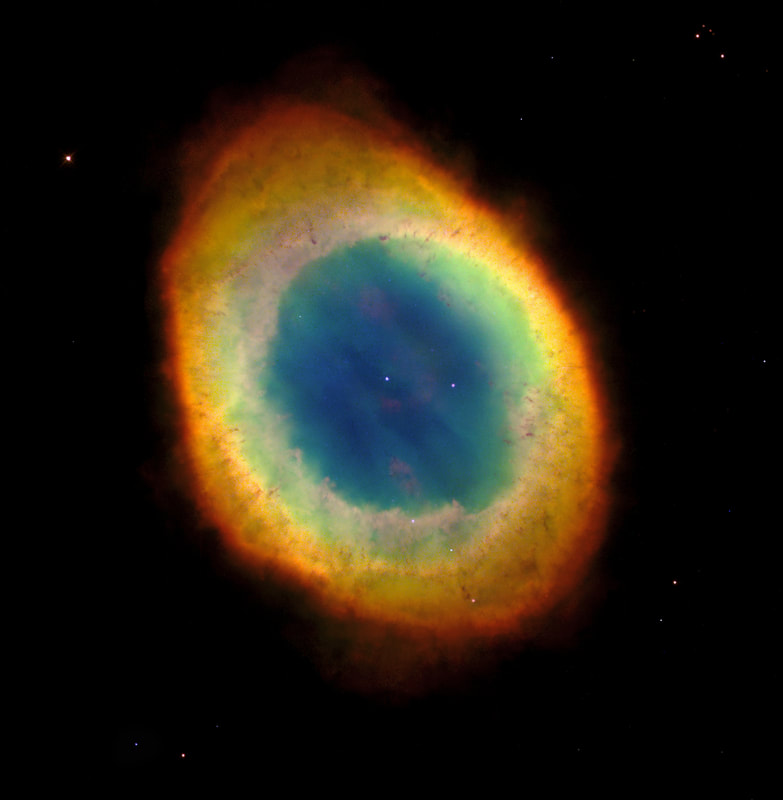To date in our blog series we have looked at the Sun as it is in its present-day state. We have not looked at how it formed nor what its evolutionary progress will be. This month we look at the Sun’s destiny, and thereby also the Earth’s.
Courtesy of Nasa/Goddard
Here we look at the key stages for how planetary nebulae are formed from progenitor stars of around about the mass of the Sun:-
- Hydrogen fusion initiates at ZAMS (Zero Age Main Sequence) and continues within the star’s core; for about 10 billion (10**10) years;
- Hydrogen (H) becomes depleted in the core – as it is all converted to helium (He). The core shrinks, heats up rapidly, and He fusion initiates. This produces carbon (C) and oxygen (O) via the ‘triple-alpha’ fusion process cycle;
- In parallel to the core collapsing, the whole star contracts slightly under gravitational collapse due to a reduced (outward) pressure from the reducing number of H to He fusion reactions;
- As the star contracts, H to He fusion (re)starts in an H-rich shell surrounding the core. This is due predominately to the increasing density, pressure and thus temperature in the shell caused by the gravitational collapse of the star’s outer layers;
- At this stage the star’s radius increases dramatically (by ~100 times) due to the outward pressure of the hydrogen ‘burning’ shell, and the star becomes a red giant star.
- When He fusion starts in the core (in what is called a helium flash) it produces high energy and radiation pressure and forces the core of the star to expand
- The expansion causes a reduction in pressure/temperature in both the core and within the outer layers, including the H to He fusion shell, and so fusion within both the core and shell (temporarily) ceases;
- This can happen several times and the star undergoes a number of shell burning and He flash cycles for about 109years;
- Within this time, the core becomes electron degenerate material of predominately C and O;
- The degenerate C and O core continues to grow in mass;
- When He is depleted in the core the core again collapses, it heats up and at some point – for massive stars carbon fusion begins. This phase lasts for a (very) short time (<10**3 years)
- At this stage, energy radiation (photon diffusion) cannot be contained by the star and the outer layers (non-core) of the star are ejected. This is the formation of the planetary nebula.
- Planetary nebulae are also formed in less massive stars (e.g. the Sun’s mass) during one (the last for the star) of the helium flashes.
- Upon the loss of gravitational pressure, and thus reduction in temperature, all fusion processes stop and the residual core (the white dwarf) is exposed.
- No fusion processes occur in white dwarfs, but they are thermally very hot and generate radiation by thermal collisions.
- The high surface temperature of white dwarfs produces intense ultraviolet (UV) radiation and it is this frequency and wavelength of radiation which creates the emissions within the expelled hydrogen and helium sphere, the planetary nebula.
The above is an overview of the Sun’s evolution. The evolution of our Sun is described in more detail and explanation (at undergraduate level) within our book on Solar physics.
For advanced learners (post graduate) we can recommend either of the following books:
a) Astrophysical processes. H Brandt. 2008 Cambridge University press
b) Stellar evolution physics. I Iben. 2013. Cambridge University press


